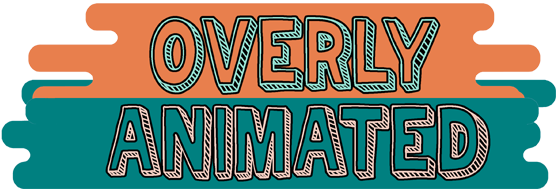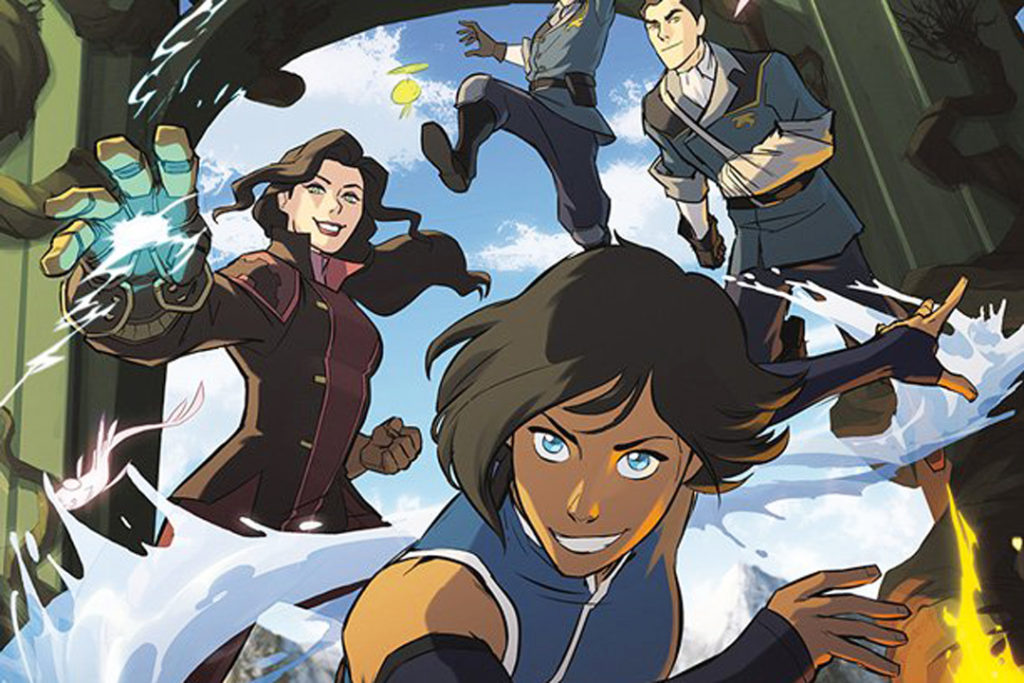“The Legend of Korra: Turf Wars Part One” Delivers on Impossible Expectations
By: Dylan Hysen
This review contains vague spoilers for The Legend of Korra: Turf Wars Part One. Specific plot details are mostly not discussed, but if you want to go into the comic with a blank slate then come back after reading.
How do you follow up on one of the greatest animated series of all time, one that has such an incredible ending both in quality and social importance? You’d think the answer wouldn’t be to do it in the form of a relatively short comic with limited space for anything too substantial, but in spite of its limitations The Legend of Korra: Turf Wars Part One delivers on massive expectations. It provides fans of Korra with a satisfying continuation of the story of the show, and one that marks the beginnings of a legitimately good narrative in its own right.
The Legend of Korra: Turf Wars Part One is the first graphic novel for The Legend of Korra, and while it follows the same format as the many Avatar: The Last Airbender comics, the big difference here is that this is written by Mike DiMartino, co-creator of Avatar and Korra along with Bryan Konietzko. So not only is this the direct follow-up story to the end of Legend of Korra, it’s written by the main narrative force behind Korra as well.
Turf Wars Part One is first and foremost an extremely satisfying read for a Legend of Korra fan. It satisfies so many of the character, narrative, and mythology details that one would want to see followed up on after seeing the end of Korra. The main characters mostly all have substantial and interesting roles to play in the plot. In particular of course Korra and Asami, who one would expect to be the focus of the attention after the end of Korra, really shine and their relationship is presented in such an incredible way. It’s by far the strongest element of the comic. The narrative, while not particularly interesting, does satisfy questions of what the ramifications of a spirit portal manifesting in Republic City would mean. Thematically the concept of spirits interacting with humans is brought to the forefront and for me it was one of the biggest concepts that Korra never really hit on. Mythology-wise, the end of Legend of Korra brings up questions of the history non-heterosexual people in the Avatar universe, and boy does this comic deliver in that area.
At its core, Turf Wars Part One is of course the Korra and Asami show. It’s such an excellent foray into their relationship, delivering on every expectation I had for it. We get many romantic displays, intimate moments such as a discussion on when each developed romantic feelings for the other, and relationship-building interwoven into the plot. Turf Wars Part One brings Korra and Asami’s relationship to life in a way that is so satisfying to see after The Legend of Korra ended on its beginnings.
But it’s not just the Korra and Asami specific romance that is done so well, it’s how the comic approaches same-sex relationships in the Avatar world. We learn of multiple other queer characters, one of whom has a discussion with Korra and Asami about the history of homophobia in the their world. It’s so remarkable to me that they actually went in that direction. I found the lack any orientation diversity to be one of the biggest flaws with the overall mythology of Avatar and Korra. Turf Wars Part One does so much to rectify this problem, by showing us not only other queer people in that world, but also how the different cultures view them. This is such a necessary thing because it gives depth to Korra and Asami’s future struggles, depth to the mythology of the world, and most importantly gives context to kids reading. Kids who haven’t had much exposure to queer characters in media are not only shown clear and explicit depictions of romance between two women, they’re shown the context of how the Avatar world views their romance, something that parallels our own world’s prejudices. This isn’t just some fantasy world where everyone is okay with people being gay, this is a realistic depiction of cultural attitudes that really mirrors our own. It makes everything with Korra and Asami so real and relatable, something I’m so glad younger Korra fans will see.
Irene Koh makes her foray into the Avatar world as the artist of Turf Wars, and she immediately shines in how she brings the Korra characters to life, despite the lack of motion. All the characters’ expressions are so vivid and emotive. Koh excels so much in the depiction of Korra and Asami. Each moment they share feels intimate, real, and emotionally palpable.
Mike DiMartino picks up where he left off in Seasons 3 and 4 of Korra in crafting excellent narratives. The character work he does with Korra and Asami in this comic is excellent, and he even finds time for a great Mako and Bolin moment that caps a satisfying enough portrayal of the two. Sure the narrative of Turf Wars Part One is nothing special, but I think it’s extraordinarily impressive that he ties in so many characters, narrative elements, and themes from Korra into the only 10 or so pages that get devoted to the plot. Overall I was extremely impressed with Mike’s writing in this medium and look forward to what he brings to future editions of the comic, particularly if he continues to iterate on the Avatar world’s mythology in new ways like he did in this edition with exploring the different cultures’ views on homosexuality.
Yes there are weak elements to Turf Wars Part One. As mentioned before, the plot itself is not particularly captivating. For some reason we’re choosing to dive back into the triads of Republic City, a plot thread not focused on since the early days of Korra, and one that wasn’t really interesting then either. It would have been nice to focus more on Tenzin, Opal, or Ikki, among others, but there were really too many characters to incorporate in such a short amount of time and I’m hopeful we’ll get more from them in Parts Two and Three. There are a few new comic-specific characters that the plot focuses around, and none of them stood out to me. By far the least interesting parts of the comic were whenever they were on the page. Turf Wars would be better served in the future by focusing more on characters from the show rather than these new people, even if their introductions weren’t terrible or anything. That being said, I was really invested in the climax of this in a way that I’ve never been by any of the action sequences in the Avatar comics. The ending is excellent, and not because of the triad plot that comes to a head, but based how well it integrates characters from the show, in particular Korra and Asami whose relationship ties in prominently and very well.
Overall I’m just so happy with Turf Wars Part One. It follows up on Korra’s progressive and socially important ending by being progressive and socially important. As a Korra fan it was such a joy to read, filled with incredible moments from characters I love, and I hope the future Korra comics only build on this impressive characterization.
Turf Wars Part One is on sale in comic book stores July 26, and everywhere August 8.
One Comment


Well some of Korra’s behavior was a bit like her early Book 2 behavior, not as bad as that but still I see glimpse of the same old Korra being dismissive of her partner’s idea and their job, so I guess Korra can be like that when she is in a relationship, but to her credit now bad as before, you see some growth in Korra and learning form her mistakes, still old habits die hard, perhaps Mako can give Asami some relationship advice.